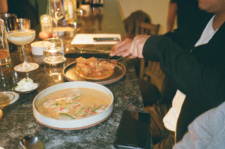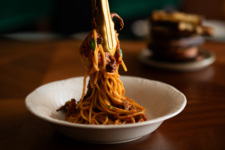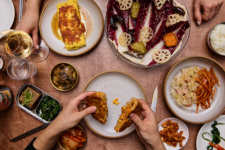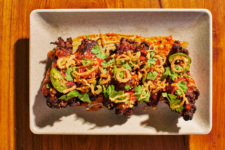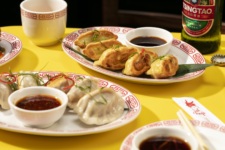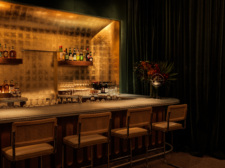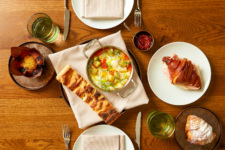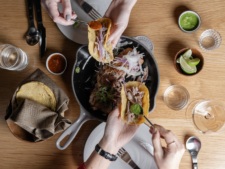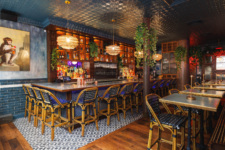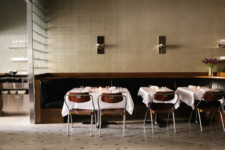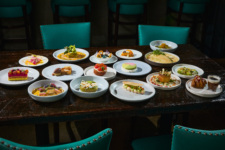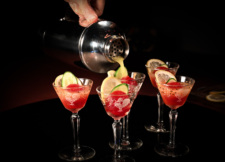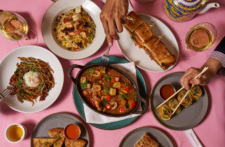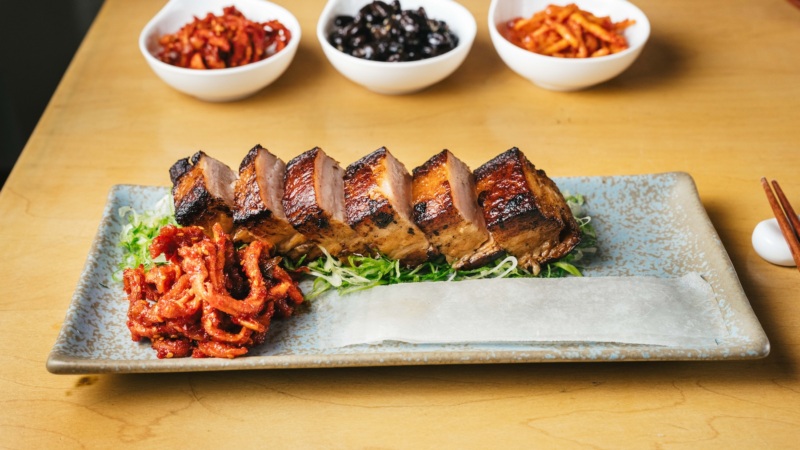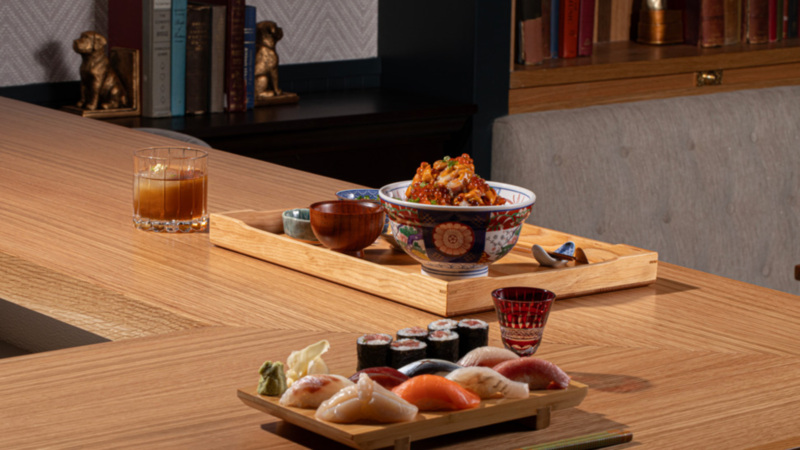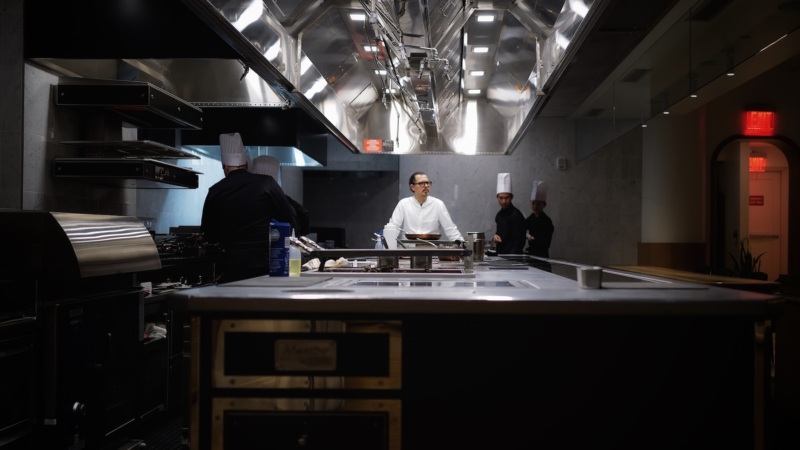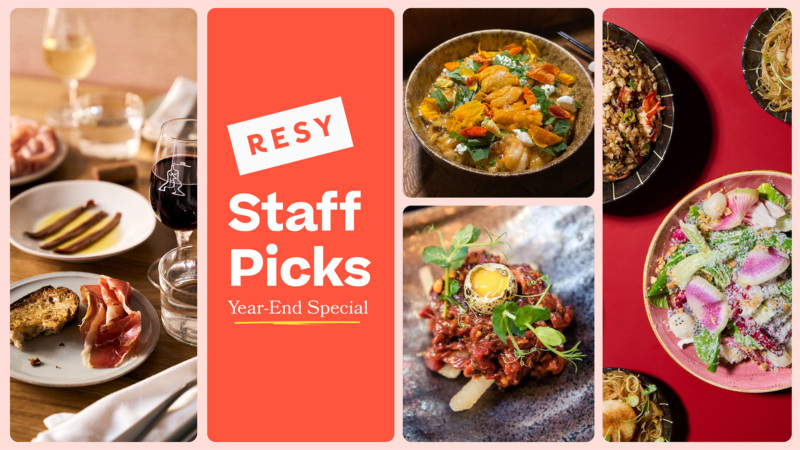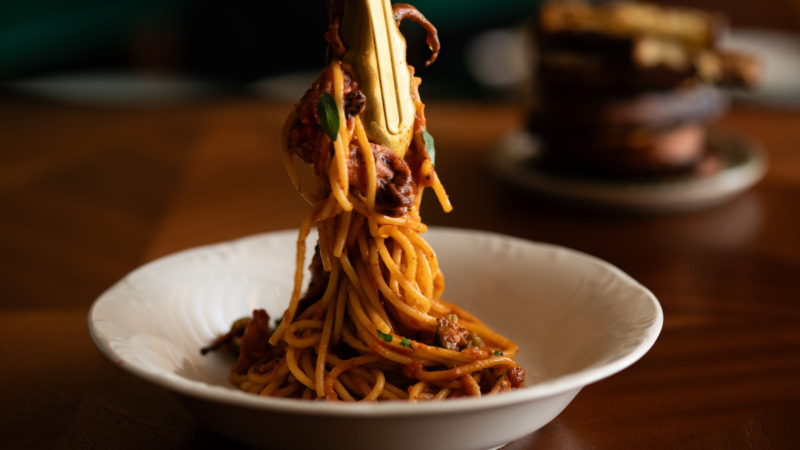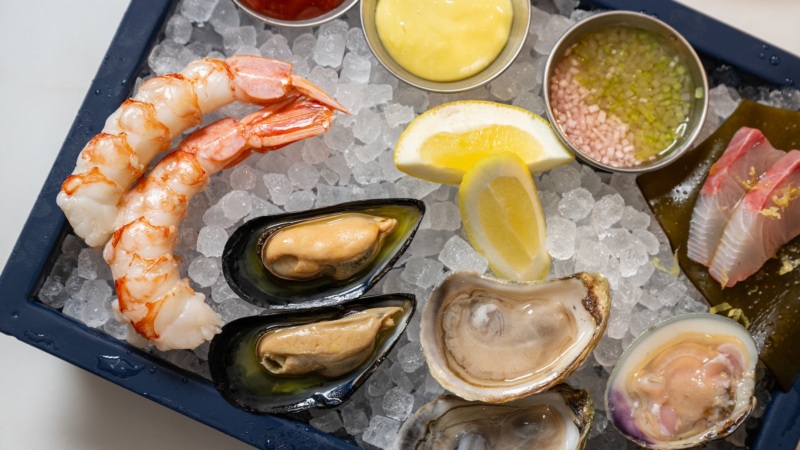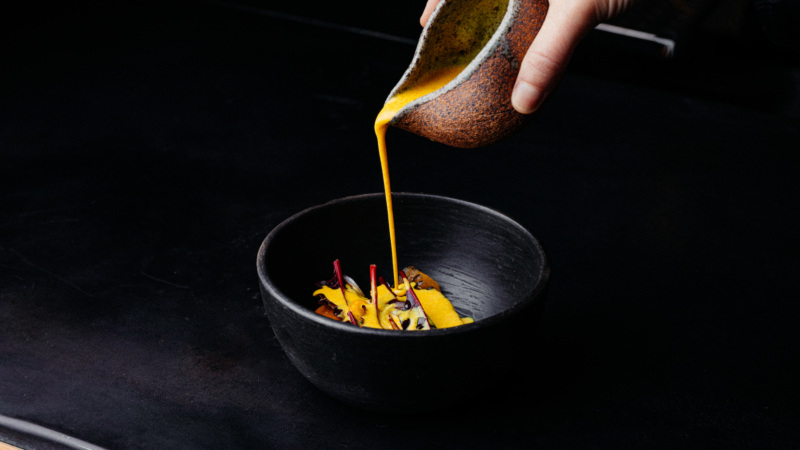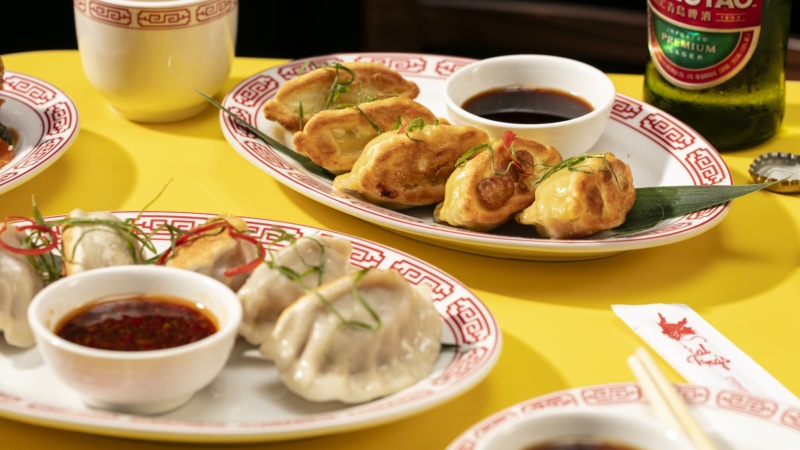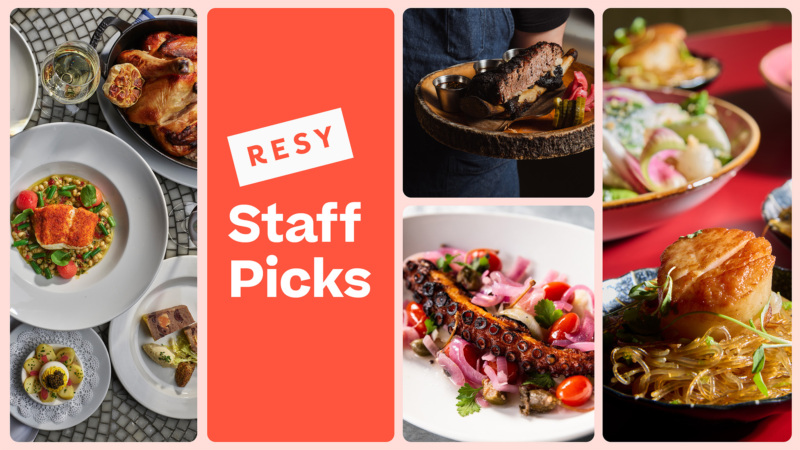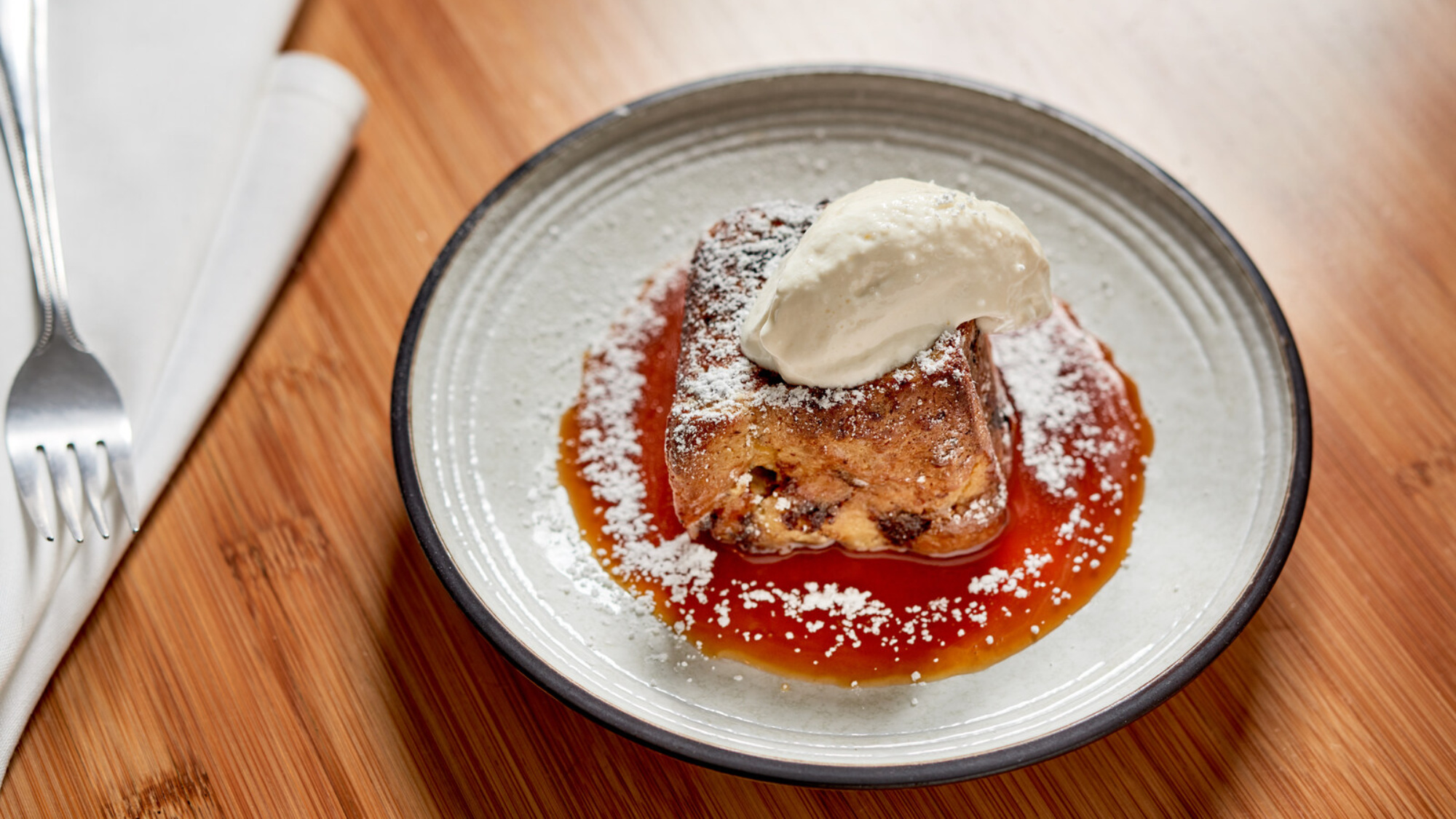
The Stories Behind the Menu at Shalom Japan
Since 2013, Shalom Japan has highlighted the diaspora of ever-adapting Jewish cookery, as well as steadfastness of Japanese cuisine, in a stretch of South Williamsburg. The menu is an amalgam of husband-and-wife team Aaron Israel and Sawako Okochi, whose dishes draw from both of their respective cultures, not always equally, and only when it makes sense.

For more than a decade, Israel and Okochi have been cooking for one another, until their kitchen work became entirely interwoven, making it hard to know where one stops and the other starts. New contextualized classics like matzoh ball ramen and lox (rice) bowl have found a following, and are deeply rooted in tradition. And at a time when there’s often warranted skepticism regarding “fusion” food, their hybridized ideas defy any reservations. Their food, and the restaurant, became a story of how Israel and Okochi’s lives, growing family, and cooking, coalesced. Their patrons — Jewish, Japanese, or otherwise — have found comfort in eating and accepting this synthesis as anything but synthetic. Shalom Japan is testament that long-standing traditions can change, often for the best.
Here, five dishes that have formed new traditions at Shalom Japan:

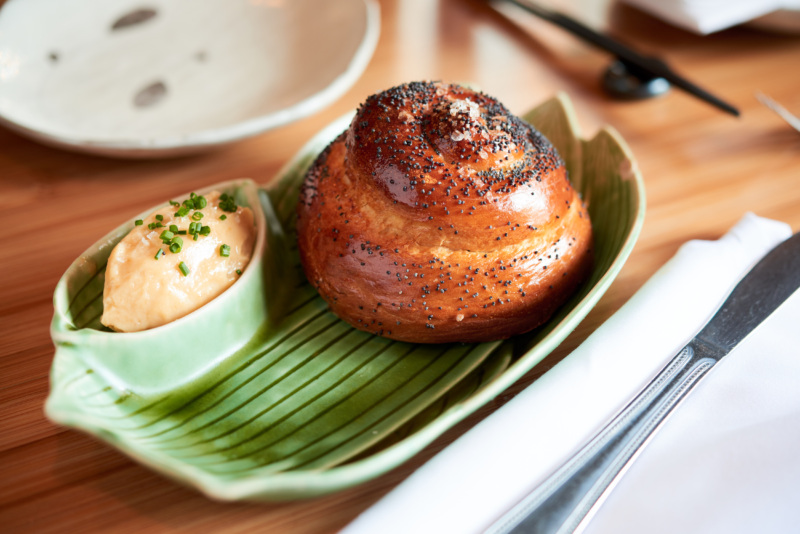
1. Sake Kasu Challah with Golden Raisin Butter
In plotting a homemade bread course, Israel and Okochi looked to traditional Jewish Shabbos for inspiration. “We ate challah on Fridays [growing up] but didn’t make it that much,” states Israel, who grew up eating something similar to Zomick’s (a New York classic) super eggy version, but knew they wanted a nice chew. So, the two added sake kasu, a paste made from lees left behind from sake production. It’s meant to “add some yeasty funky flavor,” says Okochi, which complements the sweet creaminess of the golden raisin butter that accompanies the challah. The spiral snail shell-like round is meant to share, but it can also easily be enjoyed as a single serving.
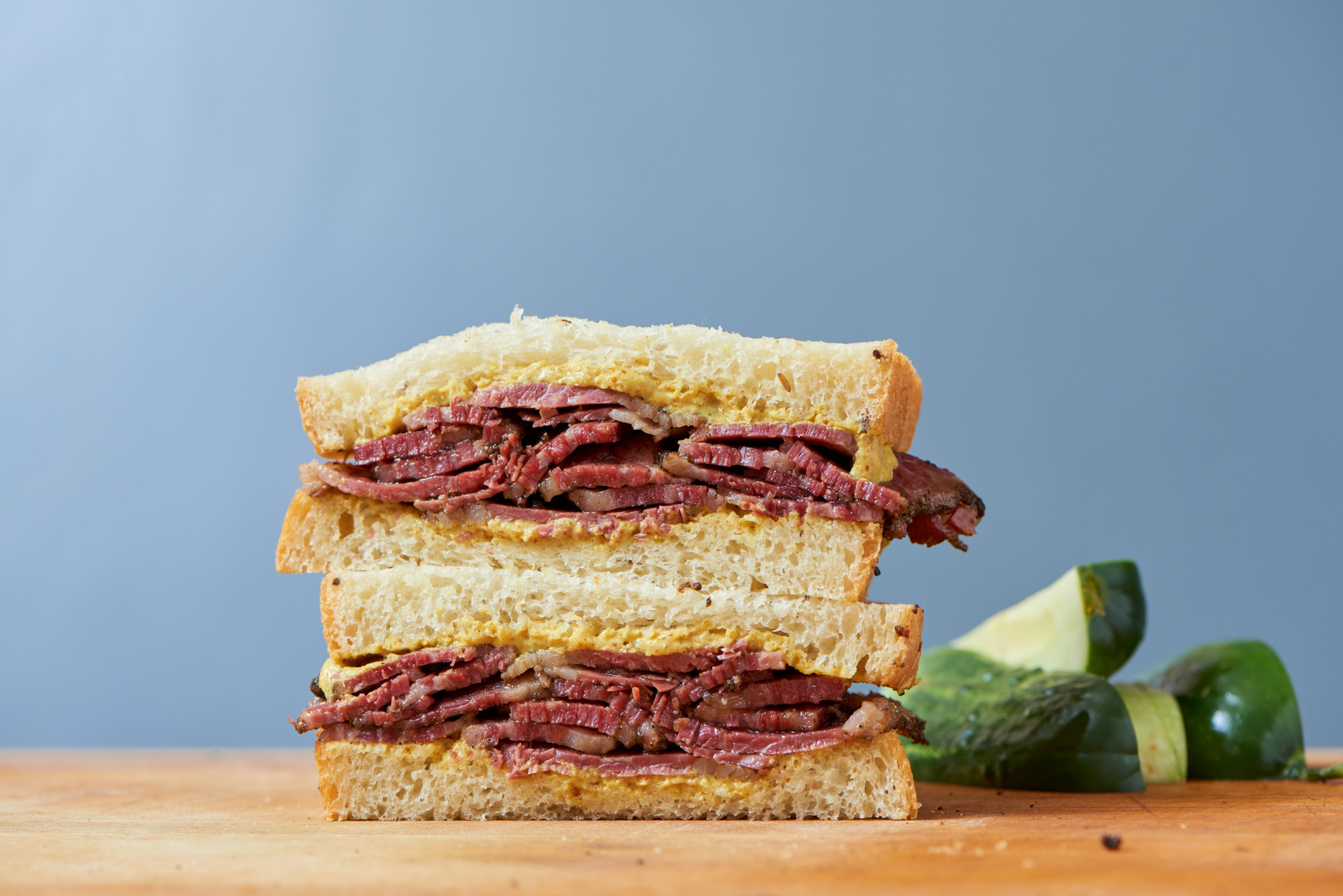
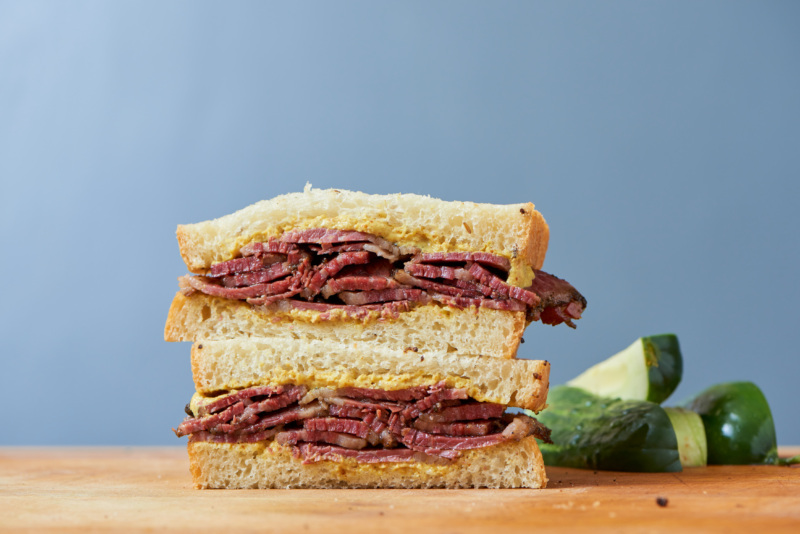
2. Wagyu Pastrami Sando on Shokupan
House pastrami, Gulden’s mustard, dill pickle
In their cookbook, “Love Japan,” (Ten Speed, May 2023), Israel and Okochi agree that in Japan, “there is no sandwich without shokupan.” Shokupan, the Japanese-style fluffy white bread has proven itself to be soft, yet sturdy enough to stand up to Ashkenazi-style seasoned smoked beef, aka pastrami. To bring the shokupan a bit closer to a deli rye, Israel and Okochi add caraway seeds to the dough, as you’d expect in a New York deli or Jewish appetizing shop.
As for the pastrami, “Wagyu offers more marbling — the brisket is larger, and there’s better fat in the muscle,” admits Israel. Their spice rub consists of black pepper, coriander, and the rest of the regular culprits, with the addition of ground nori seaweed for a deeper flavor and darker color. The meat is smoked for five hours with cherry wood then finished in the oven. Gulden’s yellow mustard is slathered on the inside of each slice of bread, thick cuts of fatty pastrami are generously stacked in the middle, and a briny, balanced dill pickle adds some freshness and crunch to the bite. “It’s the trifecta of pickle, meat, and mustard,” Israel proclaims.
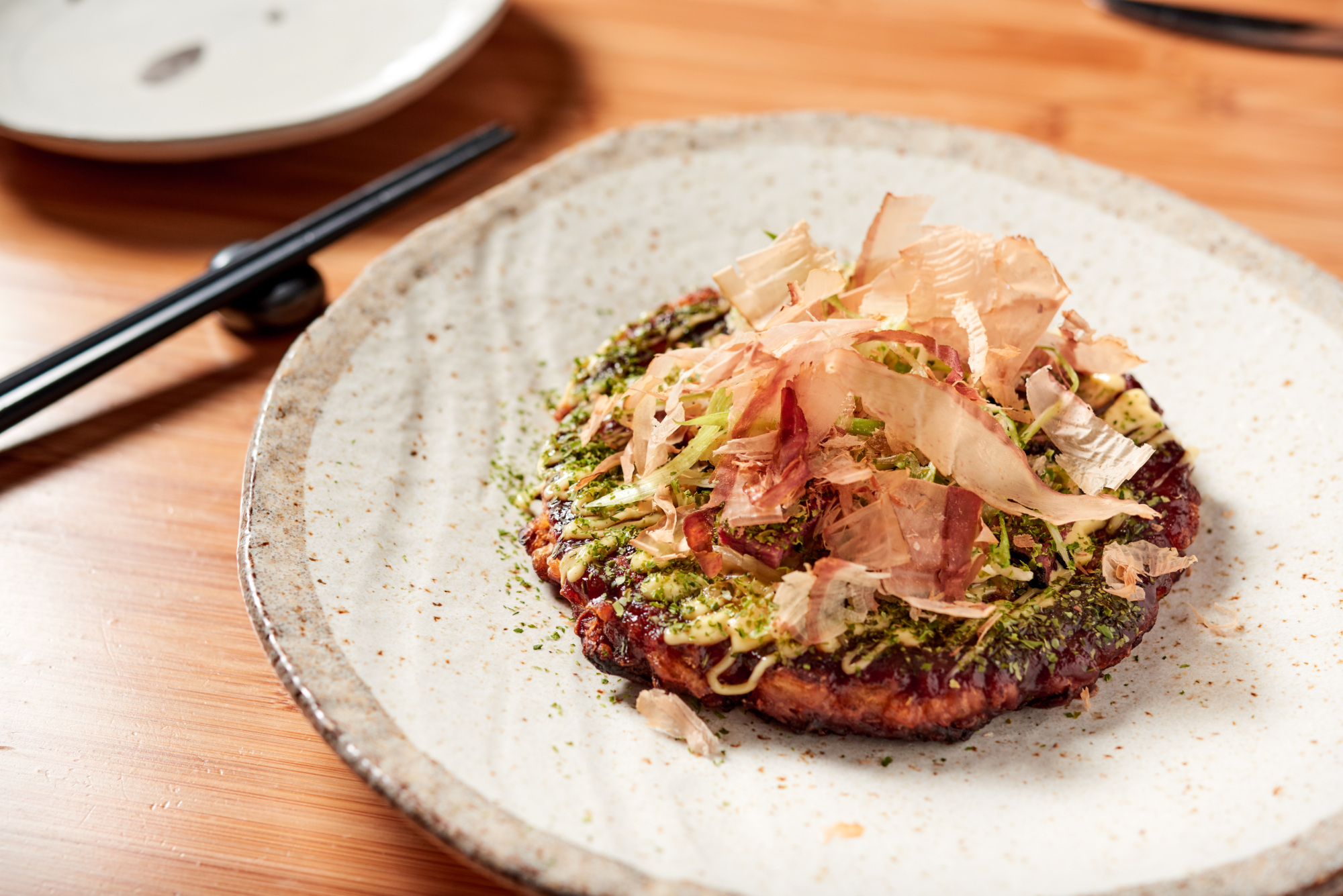
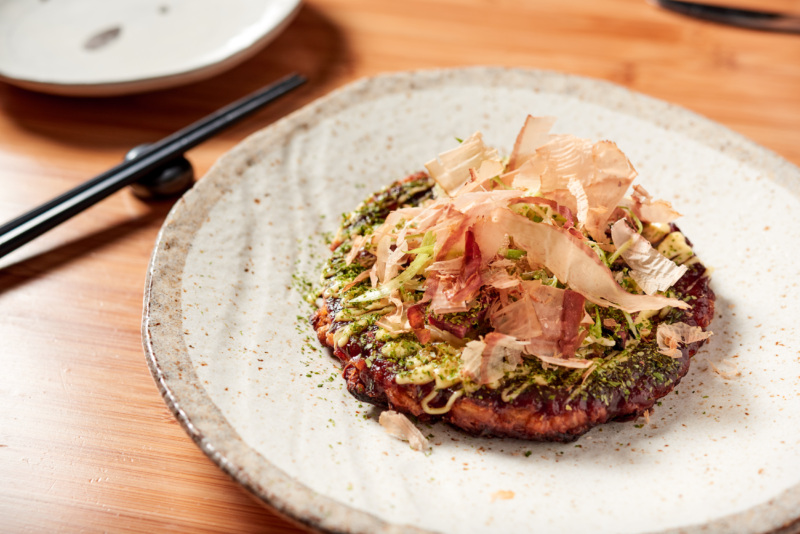
3. Okonomiyaki
Wagyu pastrami, sauerkraut, bonito flakes
Okonomiyaki is ostensibly a pancake, but oh so much more. “Okonomi” translates to “as you like it” in Japanese cooking, usually utilizing ingredients including raw cabbage, green onions, bean sprouts, meat, seafood, etcetera, mixed into an eggy batter, and then griddled or grilled (yaki) until the outside is crispy, and the insides are warm.
In southwestern Hiroshima, where Okochi is from, the pancakes are made in more of a layered-style, something like a crepe. It was one of the first things Okochi made for Israel when they first started dating. “I wanted to make something he never had before,” Okochi reflects, whose homemade version adds thick slices of pork belly to the uncooked top layer before it’s flipped. Some versions, she notes, are served with ramen noodles and a fried egg on top.
For the restaurant, however, they opted for the Kansai region’s style of okonomiyaki, which is easier to pick up during service. “We added [the aforementioned wagyu] pastrami,” Israel interjects, continuing on to top the finished dish with classic condiments such as aonori (seaweed flakes), Kewpie mayonnaise, sweet, fruity Okonomi sauce, and savory katsuobushi, aka bonito (dried tuna) flakes. It’s been a staple of the menu since they opened.
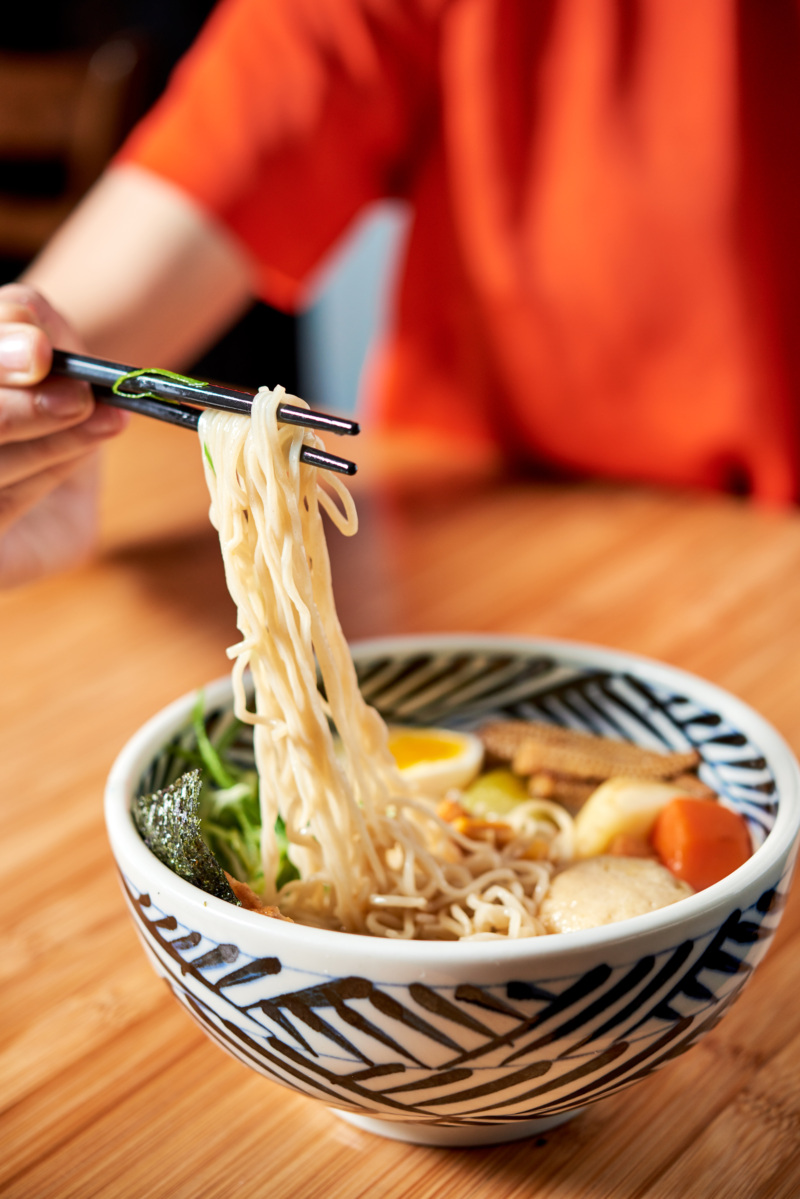

4. Matzoh Ball Ramen
Chicken broth, char siu chicken, scallion, nori
This is Shalom Japan’s all-time best seller. With more than 300 bowls served each week, this was Israel’s attempt to make matzoh ball soup more of a complete meal. “I like a soft, but not mushy matzoh ball — nothing super dense, but one that holds its shape,” professes Israel. “And we wanted a chicken stock that wasn’t too fatty,” Okochi says. Her addition was kombu, a thick piece of seaweed that adds weight and mouthfeel to liquids when simmered. Char siu chicken fortifies the chicken flavor, served instead of more customary braised pork belly chashu. Okochi suggests adding chewy Sun Noodle ramen noodles for a bigger bite, but to really round out the meal, you can add a soy-marinated egg, foie gras dumpling, or even another matzoh ball.
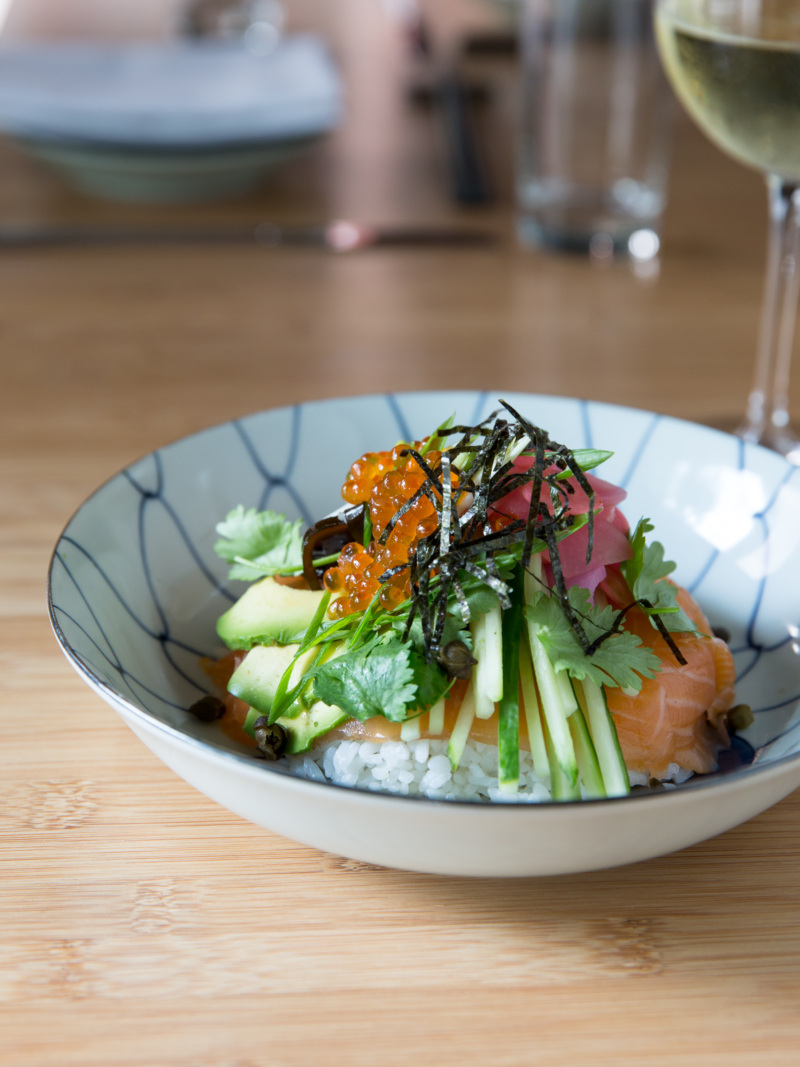

5. Lox Bowl
Rice, ikura, Japanese pickles, avocado, fried capers, chile mayonnaise
While lox is often something most people like to put on a bagel, at Shalom Japan, thin slices of brined and lightly smoked salmon are draped over rice. Donburi is a traditional Japanese rice bowl, as is chirashi (raw fish on rice) — and this combo idea delivers a double whammy of salmon, almost as if a sampling from both cultures, as Israel and Okochi put a spoonful of ikura (salmon roe) as accoutrement. “Like mother & egg,” says Okochi, referencing oyakodon (chicken & egg), another “parent-and-child” donburi. Crunchy Japanese pickles, creamy avocado, and crispy salty fried capers round out the bowl texturally, as a squeeze of chili mayo adds just enough heat to amp it up another notch, while still being able to experience the subtleties of all the individual ingredients.
Shalom Japan is open Tuesdays through Sundays for dinner starting at 5 p.m. and on weekends for brunch from noon to 3 p.m.
Find out more about “Love Japan: Recipes from Our Japanese American Kitchen” here.
Michael Harlan Turkell is a photographer, writer, and cookbook author. He’s also host of the Modernist Pizza Podcast, which explores the art, history, and science of pizza. Follow him on Instagram and Twitter. Follow Resy, too.


